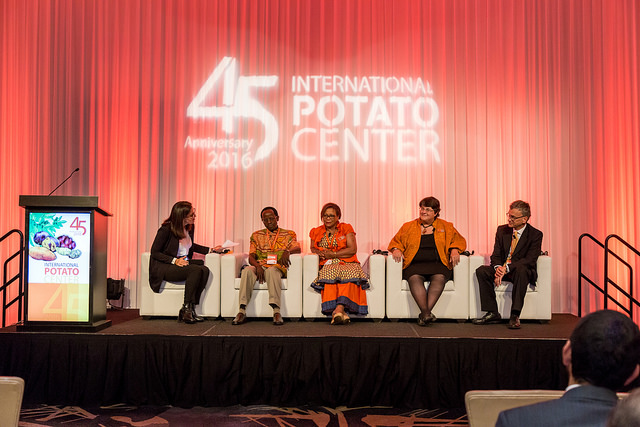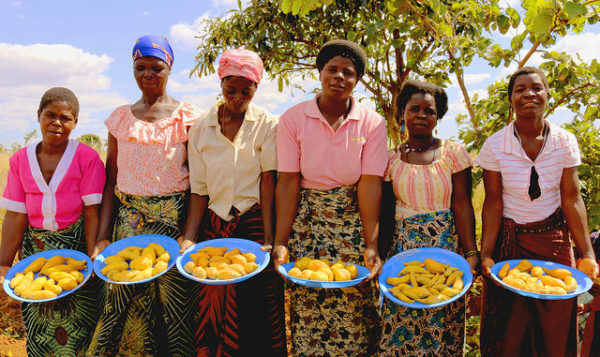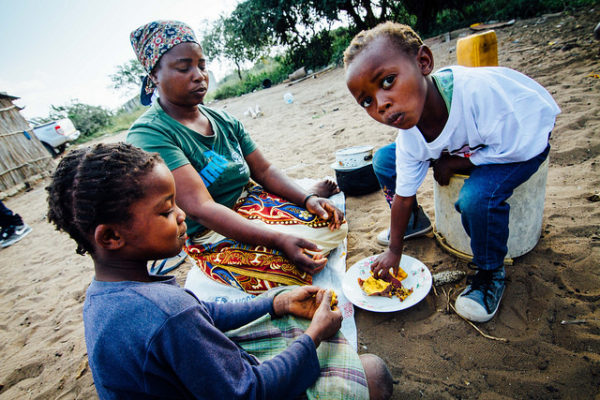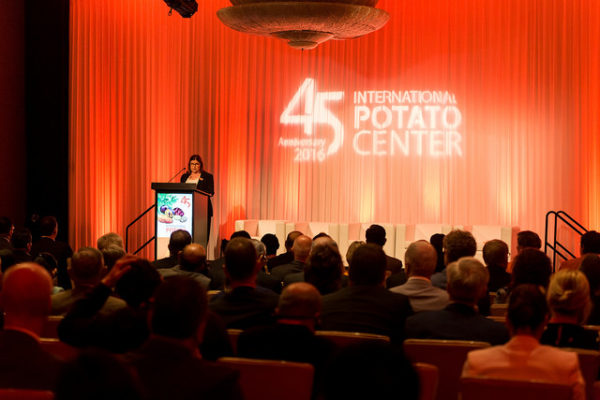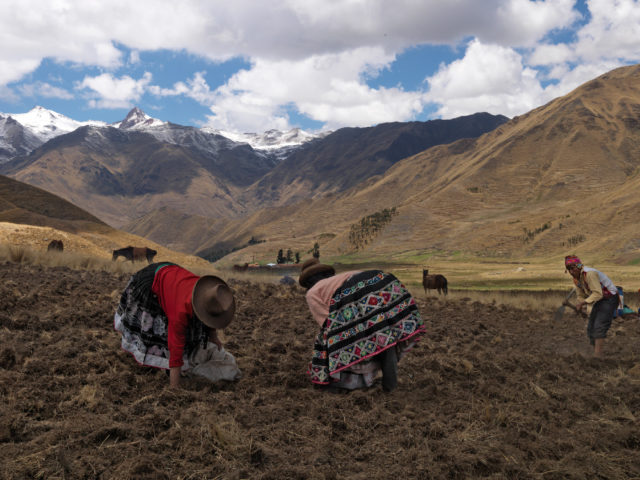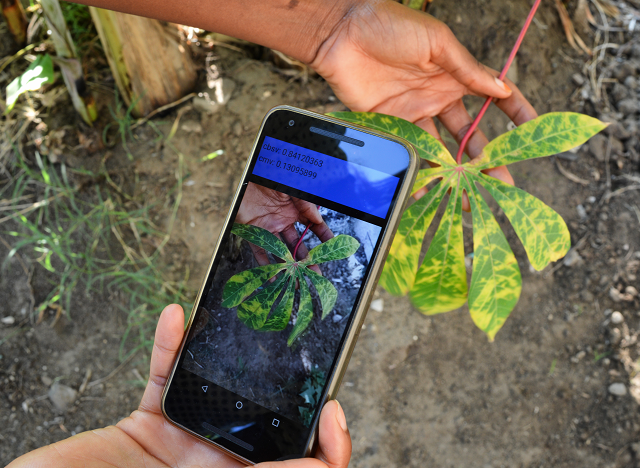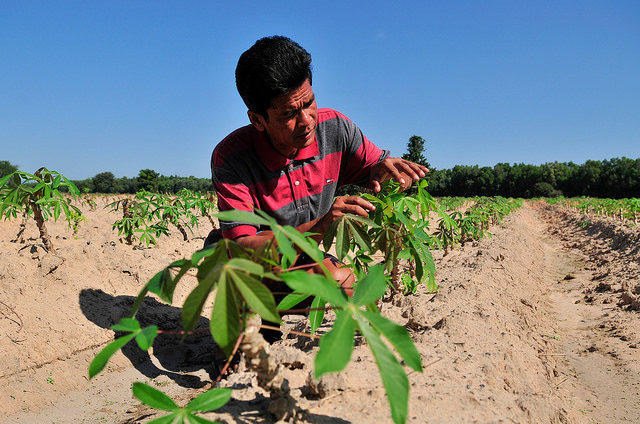By Graham Thiele, Program Director, CGIAR Research Program on Roots, Tubers and Bananas
This has been a big year for RTB’s lead center, the International Potato Center (CIP), with three of the center’s scientists winning the World Food Prize (WFP) for their work on the biofortification and scaling of vitamin A rich orange-fleshed sweetpotato (OFSP), while also celebrating its 45th anniversary year.
I recently joined a lively panel discussion with the WFP laureates – Maria Andrade, Jan Low and Robert Mwanga – during an event to commemorate these achievements in Lima, Peru, where CIP headquarters are located.
During the conversation I shared three key lessons that stood out to me from this important work on OFSP and a reflection on how advocacy in Peru to change the perception of potatoes is relevant for addressing food and nutrition security in Africa.
Lesson 1: Food based approaches to addressing hidden hunger work!
A key component underpinning the success of OFSP to address vitamin A deficiency was that researchers paid very close attention to building an evidence base that it worked. This began by showing the impacts on nutrition that OFSP was having at a local level. Another key element that was stressed during our panel discussion was paying very careful attention to scaling and making sure that the right partners were on board at each stage.
Here in Peru and the Andes the most important hidden hunger we are facing is iron and zinc deficiency. This is also very debilitating for those affected and its quite prevalent in highland communities. CIP and many other partners have already begun exciting and promising work utilizing potato to address this hidden hunger. Potato has reasonable levels of iron and zinc, and some varieties have especially high levels. Through breeding we can further increase those levels, just as was done for Vitamin A with sweetpotato. Of course the more nutrient dense potato would need to enter into family diets and there would be a strong nutrition education dimension to this. But just as with OFSP, if we want to make this a success we need to pay careful attention to getting the evidence of nutritional efficacy and have a strong strategy for scaling. Actually the evidence of impact generates momentum and can build the investment case for scaling.
Lesson 2: Food based approaches empower women!
By working with OFSP which is locally produced, women are empowered to take control over their nutrition and health and that of their babies and young children. Women themselves pay a central role in accessing vines, growing and harvesting the roots and preparing OFSP food. So this is the equivalent of teaching women to grow their own Vitamin A pills. However, we also learned that only engaging women doesn’t work. Men play a key role in decision making and access to resources, and need to be involved too. For example, it may be a challenge for a heavily pregnant woman to collect vines for planting or prepare land, so their spouse needs to be on board as well. So empowering women with OFSP really means being sensitive to many gender issues.
Lesson 3: Extraordinary results mean extraordinary people and these need extraordinary organizations!
The experience of introducing OFSP and getting impact at scale is a highly complex innovation. It required a series of technical challenges such as breeding to improve dry matter content of OFSP varieties adapted to Africa, engaging the nutrition community to provide the key education messages needed for uptake, but also convincing donors and bringing in many partners across a multitude of countries. This whole process took nearly 20 years!
Jan, Maria and Robert are innovation champions who pushed this though in the face of many difficulties. Jan mentioned that she took this proposal for in initial proof-of-concept research in Mozambique to 21 different donors before she found one who was prepared to fund an integrated agriculture-nutrition proposal. Jan and Maria were even described as ‘the crazy sweetpotato ladies’ for pushing so single mindedly what seemed like an improbable vision.
So the extraordinary results we have heard about required three extraordinary people. Yet this wouldn’t have been possible if they hadn’t worked in an organization with an incredible team which had the vision and flexibility to support this.
Reflection: the advocacy work in Peru to change the positioning of potatoes is very relevant for OFSP and other food based approaches in Africa
One amazing achievement in Peru over the past decade, of which we are immensely proud, has been to dramatically raise the profile of the potato and its consumption. This built on work by CIP, the National Innovation Institute, the Ministry of Agriculture, Institute of Nutritional Research, NGOs, chefs, gastronomy schools, supermarkets, processors and farmer organizations. It began by re positioning native potatoes as part of Peru’s cultural and gastronomic heritage, as well as a delicious ingredient with chefs. This spilled over to a more general shift in perceptions leading to the designation of a National Potato Day which is celebrated every year.
There are lessons from this for Africa about how to reposition sweetpotato and other root crops for urban consumers. These are often perceived as the poor man’s or women’s food suitable for villages but left behind as people move to cities. The experience of Peru shows that it’s possible to reposition these as nutritional and delicious functional foods for urban populations. This should lead us to a two-way exploration and joint construction of options among colleagues in Africa with those in Peru and the Andes for promoting healthier diets based around sweetpotato and potato.
